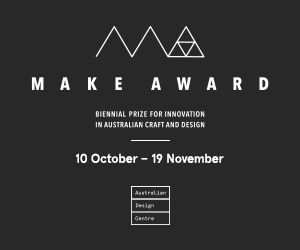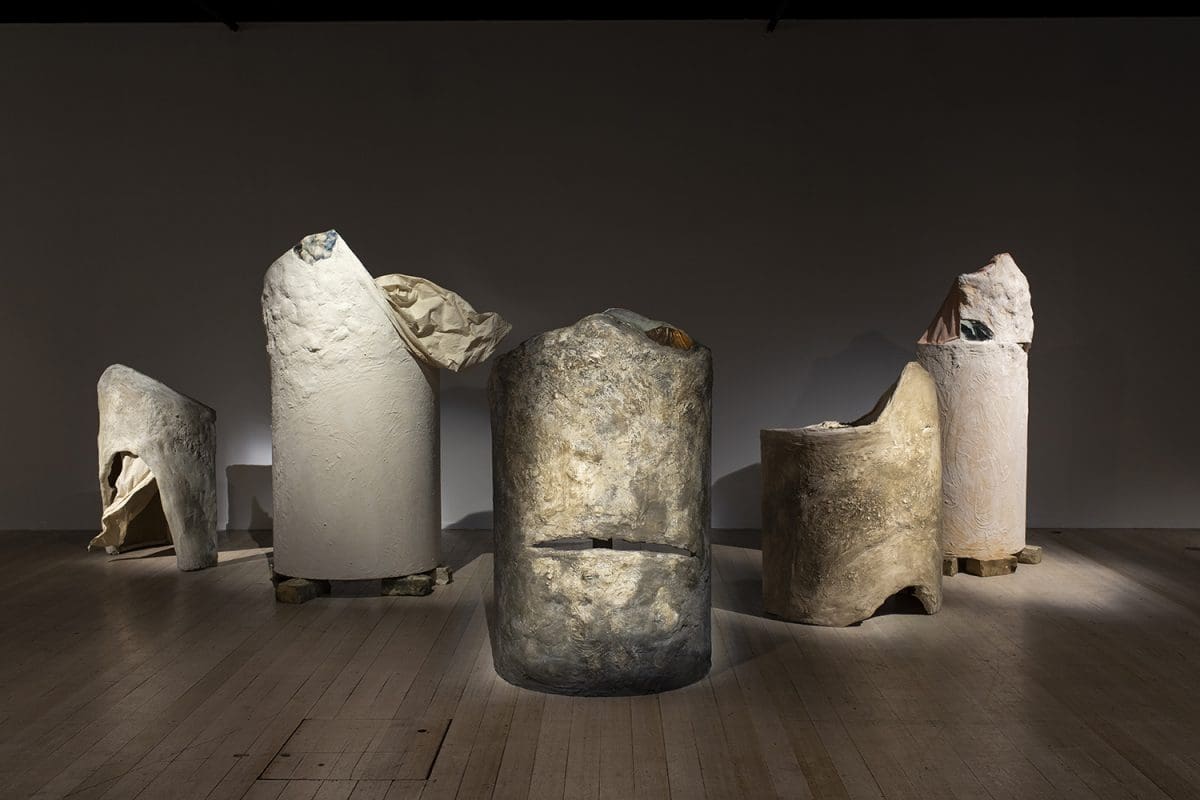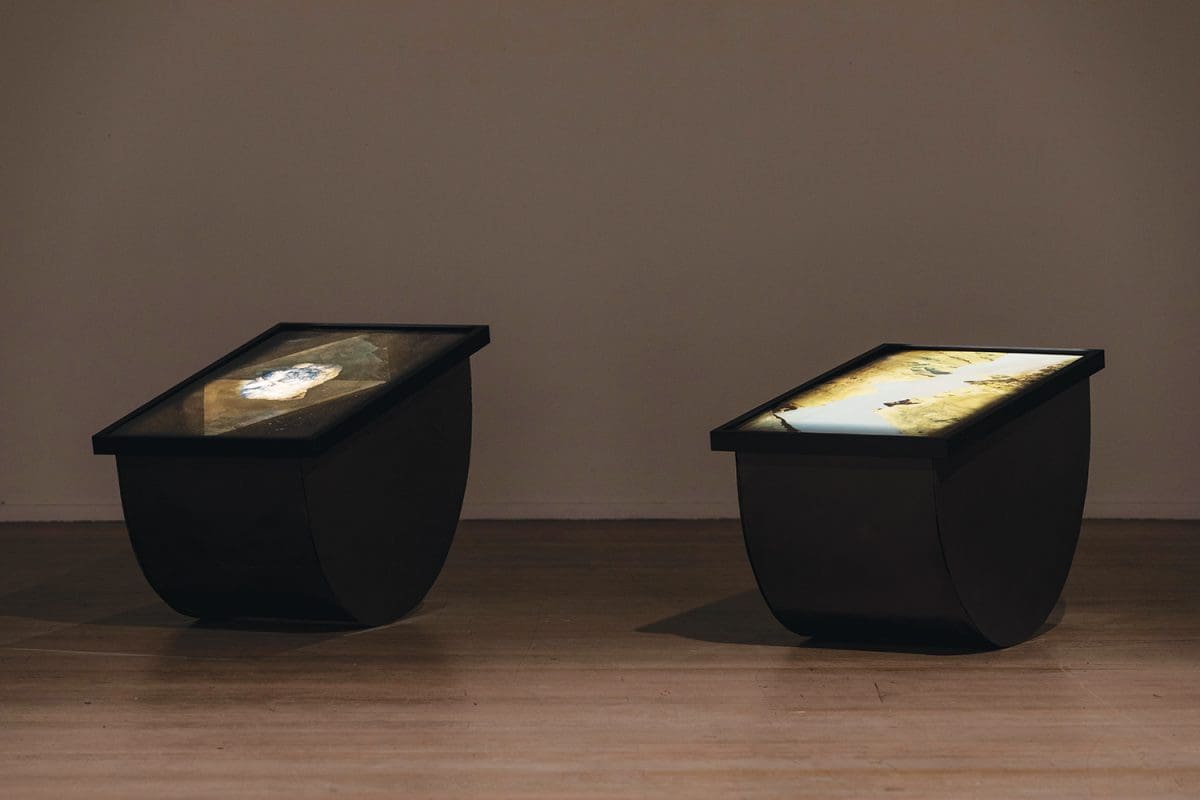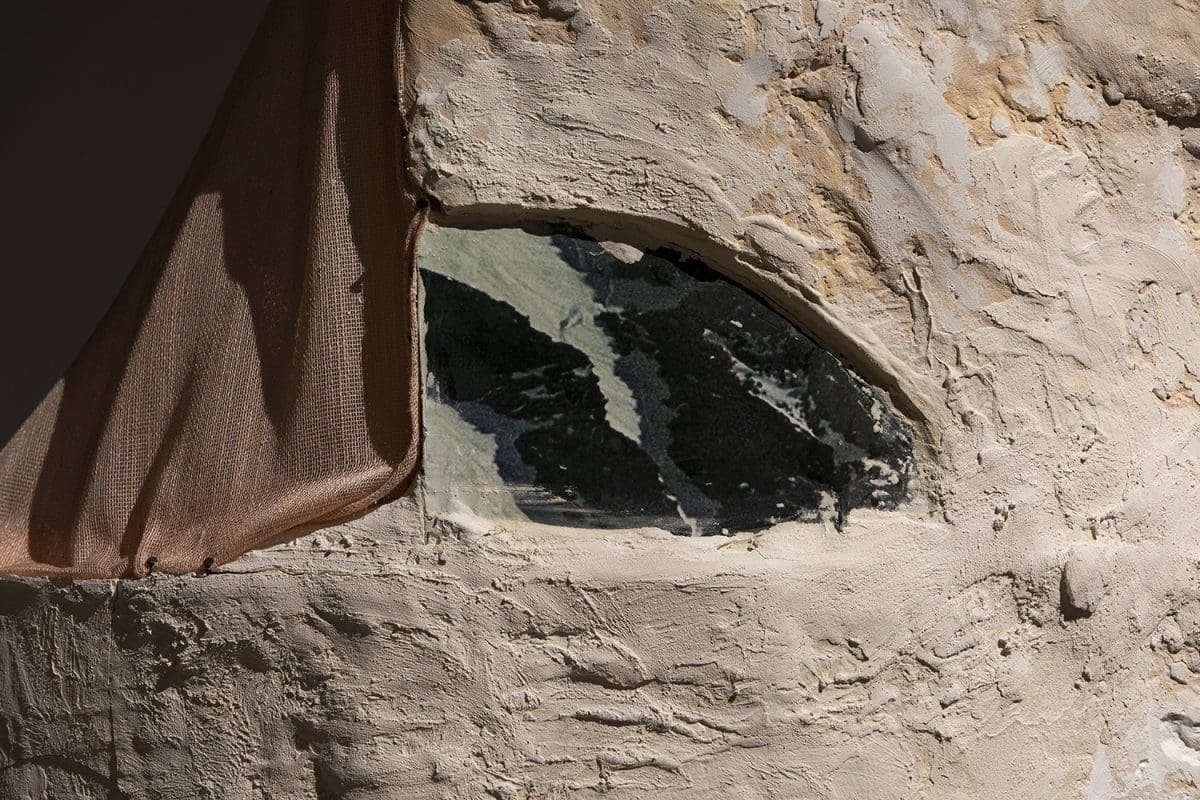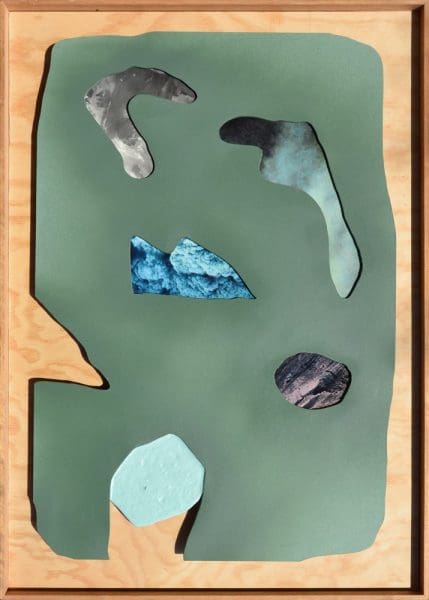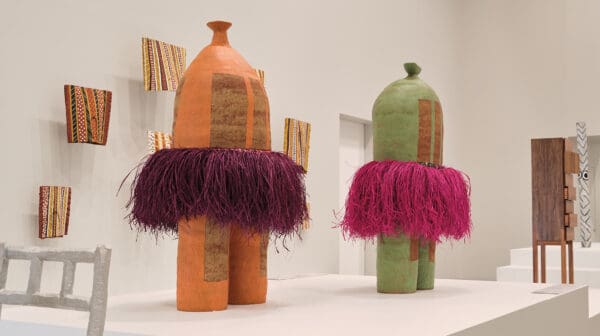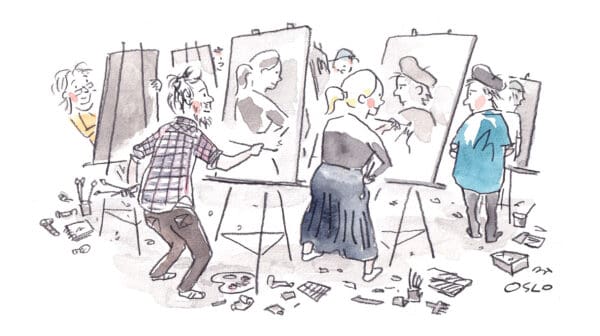Eloise Kirk likes to look at pictures of natural disasters. Piles of earth ruptured by earthquakes, ripples of molten lava congealed at the base of a mountain or debris scattered in the wake of a tsunami. For Kirk, there is something beautiful about the shape of disaster and chaos. “To me, the visual properties of disasters signify the coming undone of the built environment,” she says. “It’s also analogous to the way I make my work – fracturing, erasing and reassembling elements to create something new.”
Working predominantly with collage, painting and sculpture, much of Kirk’s creative output is connected to landscapes she has visited in person or studied via visuals on Google Earth. Deliberately seeking out inhospitable environments like the lava fields of Iceland and the bare conglomerate peaks of Tasmania’s Queenstown, Kirk is drawn to landscapes possessing partially concealed and unpredictable geological elements. Over time, these places become embedded deep within her work, through images referencing waves and clouds or the way a sculpture recalls a cross section of soil and rock layered beneath the earth. Exact locations are not revealed, and the mystery lends a fantastical edge to her work, as though her images and forms are strange geological samples from unknown realms.
Favouring the pliable materials of resin, pigment and plaster, Kirk deftly combines slick smoothness with organic texture, abruptly cutting off one before the other begins. Words like enigma, elemental and alchemy have been used to describe her work and she cites the mystical practice of scrying as a pivotal influence on her practice. Used by soothsayers and fortune tellers, scrying employs reflective surfaces like crystal or stone to divine visions of the future or mysterious messages otherwise hidden from view. “I’ve always been interested in scrying and using natural elements to evoke the other worldly or allude to something other than what is visually present,” says Kirk. “To explore this idea, I often use pools of dark, reflective resin interwoven with rough textures.”
While her pieces are mostly stationary, they appear to possess a latent energy. Movement has ceased yet something still exists beneath the surface – moving, crumbling, bubbling.
Graduating in 2013 with a Masters of Visual Arts from Sydney College of the Arts, a significant portion of Kirk’s early work is focused on painting and collage. Strikingly minimalist, Kirk’s images embody generously smooth swathes of single colours interrupted by images of rock formations and billowing clouds. The exploration of sculpture has been a recent development and is tied to research she undertook during a Shotgun residency at Contemporary Art Tasmania (CAT) in 2019. A partnership between CAT, Mona and Detached Cultural Organisation, Shotgun gave Kirk the opportunity to work with curators, writers and artists. She drew particular inspiration from spending time with sculptor Lucy Bleach, an artist who also favours volatile landscapes and is influenced by the geological formation of volcanic sites.
The culmination of Kirk’s Shotgun residency was dark maria, an installation made up of three parts: a series of earthy, cylindrical forms; collages of pigmented resin; and paintings placed atop movable curved bases. The title dark maria refers to the phenomenon of lunar maria – dark spots on the surface of the moon once thought to be ocean (in Latin, maria means sea). Further scientific exploration eventually revealed the lunar maria to be large basalt plains formed by ancient volcanic matter. With this information in mind, the cylindrical forms in dark maria appear like drilled samples from a lunar surface, pock-marked and dusty. “I chose this title not only for its geological reference but because I’m attracted to things which have multiple meanings, misunderstandings and ambiguous histories,” elaborates Kirk. “For me this allows space for consideration and a multiplicity of interpretations within my work.”
Following the concentrated time of researching and making required for Shotgun, Kirk will soon be seeking out inhospitable landscapes once again, this time in New Zealand. As part of a self-directed residency at New Zealand Pacific, Kirk will be stationed on the North Island, just outside of Wellington. “I’ll be doing field research and collecting data in volcanic areas like Tongariro National Park and White Island for a new series of collages and sculptures,” she explains. “Most of my time will be spent photographing and documenting geological forms and minerals. The precariousness and uncertainty of volcanic sites are of great interest to me as these qualities seem especially pertinent at present – both environmentally and on a societal level.”
Eloise Kirk is included in a group exhibition at KINGS Artist-Run Initiative from 10 January — 1 February 2020.
This article was originally published in the January/February 2020 print edition of Art Guide Australia.


